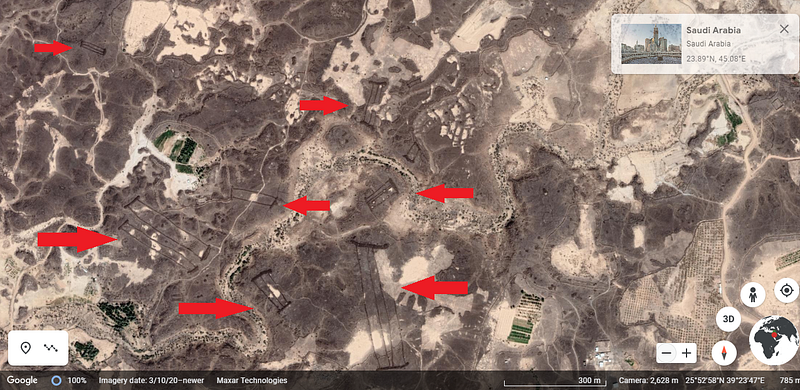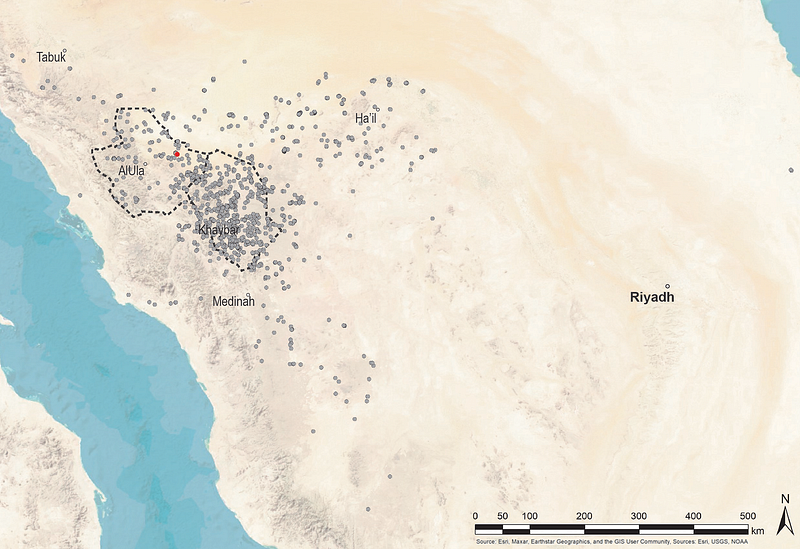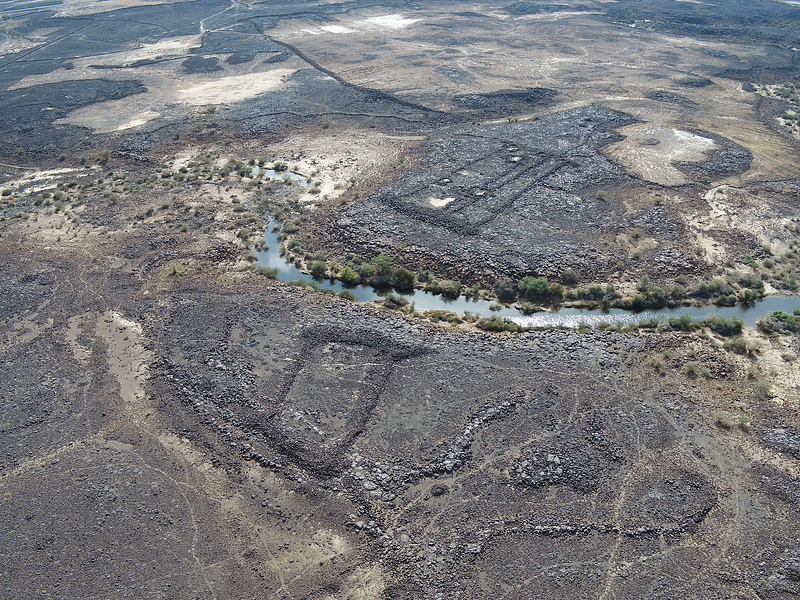Exploring Saudi Arabia's 1600 Ancient Neolithic Monuments
Written on
The vast deserts of Saudi Arabia are home to a remarkable set of ancient Neolithic monuments, known as mustatil, which shed light on a time when this arid landscape was teeming with life.

T.E. Lawrence, in his memoir Seven Pillars of Wisdom, paints a vivid picture of the harsh desert environment, where the heat and wind can be disorienting, and the nights are filled with the silence of countless stars. Lawrence's narrative serves as a backdrop to understanding the monumental mustatil structures, which challenge the conventional view of the Arabian Peninsula as a barren land.
Recent archaeological research has uncovered about 1,600 of these monumental stone structures, with some dating back approximately 7,000 years. As Jane McMahon from the University of Western Australia notes, these sites span an area of 300,000 square kilometers, presenting a striking contrast to the notion that this region was largely uninhabited until the Bronze Age.
The term "mustatil," which translates to "rectangle" in Arabic, aptly describes the uniformity of these structures, hinting at a time when the desert was likely a much different environment, bustling with communities and large herds of livestock.
Historical Significance and Recent Discoveries
As documented by archeologists Mellissa Kennedy and her team, these monumental structures range in size from 20 to 600 meters and were crafted using locally sourced stones. Their unique design includes two parallel platforms linked by long walls, creating spacious courtyards.
Archaeological interest in these mustatils began in the 1970s, but it wasn't until 2017 that extensive studies were initiated, following the Kingdom of Saudi Arabia's invitation for research. Under the Aerial Archaeology in the Kingdom of Saudi Arabia Project (AAKSA), researchers utilized advanced technologies to catalog these ancient sites, revealing at least 1,600 mustatil scattered throughout the northern and western deserts.

In their findings published in the journal Antiquity, Thomas and his colleagues describe a standard mustatil's components: a head, courtyard, long walls, and sometimes additional features like circular cells. The head is typically made up of unworked stones and often contains a central chamber linked to the courtyard.
Kennedy’s team made significant discoveries while excavating one mustatil, revealing multiple phases of use, including offerings of animal remains, which suggest that these structures served ritualistic purposes rather than being permanent dwellings.
Insights from Excavation
During a 2019 excavation at site IDIHA-0008222 in AlUla County, Kennedy's team found a chamber with three upright stones and evidence of various phases of use, indicated by the layers of animal remains and offerings.
The finds included remains from domestic cattle, goats, and even gazelles, pointing to a culture that engaged in selective rituals involving animal sacrifices. Radiocarbon dating suggests that this site was active between 5307–5002 and 5056–4755 BC.
A smaller chamber, referred to as a "cist," was also discovered, containing the remains of a middle-aged man. This grave, highly fragmented, indicates that the mustatil were not just places of construction but also of burial, signaling complex social practices.
Ritualistic Significance
The mustatil likely served as temporary pilgrimage sites rather than permanent settlements. Kennedy's team posits that communal feasting and the construction of these structures fostered social cohesion among nomadic groups, while also defining territorial access to resources.
The sheer number of mustatils suggests a vibrant community that thrived on agriculture and animal husbandry, existing in a landscape that once provided ample water and pasture.

During the Holocene Humid Period, approximately 10,000 to 6,000 years ago, the Arabian Peninsula was significantly wetter, allowing for a different lifestyle than what is observed today. The findings of the mustatil indicate that ancient communities thrived in a more hospitable environment.
In conclusion, the mustatil of Saudi Arabia offer crucial insights into the region's prehistoric inhabitants, suggesting that they once navigated a landscape rich in resources rather than the arid desert we see today. As excavation efforts continue, these ancient sites promise to reveal even more about a time when the Arabian Peninsula was alive with activity.
If you would like to read more stories like this, consider signing up for my mailing list. For inquiries or to connect, please visit my profile page.